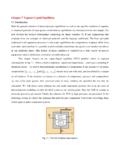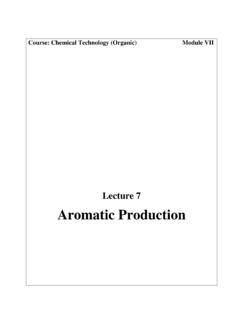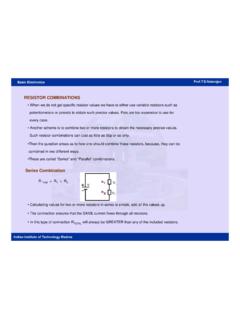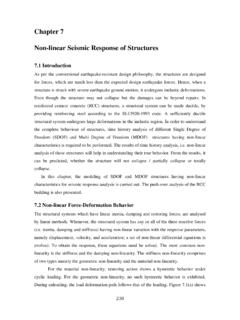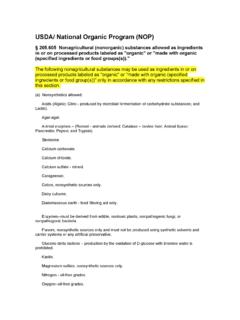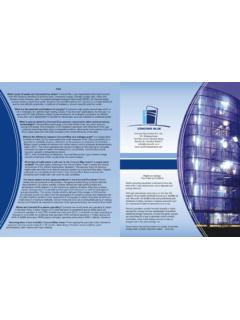Transcription of Lecture 6 Catalytic Reforming - NPTEL
1 Course: Chemical Technology (Organic) Module VI. Lecture 6. Catalytic Reforming Lecture 6. Catalytic Reforming . Catalytic Reforming is a major conversion process in petroleum refinery and petrochemical industries. The Reforming process is a Catalytic process which converts low octane naphthas into higher octane reformate products for gasoline blending and aromatic rich reformate for aromatic production. Basically, the process re-arranges or re-structures the hydrocarbon molecules in the naphtha feedstocks as well as breaking some of the molecules into smaller molecules. Naphtha feeds to Catalytic Reforming include heavy straight run naphtha. It transforms low octane naphtha into high-octane motor gasoline blending stock and aromatics rich in benzene, toluene, and xylene with hydrogen and liquefied petroleum gas as a byproduct.
2 With the fast growing demand in aromatics and demand of high - octane numbers, Catalytic Reforming is likely to remain one of the most important unit processes in the petroleum and petrochemical industry. Various commercial Catalytic Reforming processes is given in Table M-VI Table M-VI : Various Catalytic Reforming Processes Process Licensor Rheniforming Chevron oil Power forming ESSO Oil/EXXON. Magna forming Altalntic Richfield oil Ultra forming British petroleum Houdriforming Houdry process CCR Plateforming UOP. Octanising Axen OCTANE NUMBER OF HYDROCARBONS. Octane number is a measurement of antiknock characteristics of fuels Among the same carbon number compounds, the order of RONC is (Research Octane Number ). Paraffins < Naphthenes < Aromatics Branched paraffins also have high octane.
3 It increases with degree of branching. Therefore, octane number of naphtha can be improved by Reforming the hydrocarbon molecule (Molecular rearrangement). Octane number of various hyrdrocarbons is mention in Table M-VI. 238 Such rearrangement takes place in Reforming reactors in presence of catalyst by way of numerous complex reactions. Table M-VI : Octane Number of Various Hydrocarbons Hydrocarbon Octane number n-Butane i-Butane n-Pentane i-Pentane n-Heptane octane toluene Feed consists of Heavy straight run gasoline (HSR), Naphtha, Heavy hydro cracker naphtha and Naphtha containing (C6-C11) chain paraffins, olefins, naphthenes & aromatics. PROCESS STEPS IN Catalytic Reforming . Basic steps in Catalytic Reforming involve Feed preparation: Naphtha Hydrotreatment Preheating: Temperature Control, Catalytic Reforming and Catalyst Circulation and Regeneration in case of continuous Reforming process Product separation: Removal of gases and Reformate by fractional Distillation Separation of aromatics in case of Aromatic production NAPHTHA HYDRO TREATMENT.
4 Naphtha hydrotreatment is important steps in the Catalytic Reforming process for removal of the various catalyst poisons. It eliminates the impurities such as sulfur, nitrogen, halogens, oxygen, water, olefins, di olefins, arsenic and other metals presents in the naphtha feed stock to have longer life catalyst. Figure M-VI illustrate hydrotreatment of naphtha. Sulphur: Mercaptans, disulphide, thiophenes and poison the platinum catalyst. The sulphur content may be 500 ppm. Maximum allowable sulphur content ppm or less and water content <4 ppm. Fixed bed reactor containing a nickel molybdenum where both hydro de sulphurisation reactions and hydro de nitrification reactions take place. The catalyst is continuously regenerated. Liquid product from the reactor is then stripped to remove water and light hydrocarbons.
5 239 Various sections in the naphtha hydro treatment unit are: Charge Heater: Preheating reactor feedstock to reaction temperature of 340 oC. Charge heater has four passes four gas burners. Heater tubes are made up of SS-321. Reaction Section: The reactor consists of two catalyst beds. Stripping Section: Stripping section uses air for stripping the light ends mainly hydrogen sulfide from reactor product, stripper temperature 14 kg/ cm2 and temp. 172 0C. Stripper Reboiler: Stripper reboiler supply heat required for striper Operating Variables Naphtha Hydrotreatmernt Reactor temperature Space velocity Hydrogen partial pressure H2/HC ratio, feed quality Stripper bottom temperature Flue gas Make up Recycle Hydrogen Hydrogen Low Temp Feed Heater Flash Hydro desulfurisation Treater Stripper High Temp.
6 Flash Desulfurised feed Figure M-VI : Hydrotreatment of Naphtha CLASSIFICATION OF PROCESSES. Semi Regenerative Catalytic Reforming Cyclic Catalytic Reforming Continuous Catalytic Reforming (CCR). 240 Various Types of Catalytic Reformers Semi-Regenerative Fixed Bed reactors: In this type of reformers the catalyst generally has a life of one or more years between regeneration. The time between two regeneration is called a cycle. The catalyst retains its usefulness over multiple regeneration. Cyclic Fixed Bed Reformers: Cyclic reformers run under more severe operating conditions for improved octane number and yields. Individual reactors are taken offline by a special valving and manifold system and regenerated while the other reformer unit continues to operate.
7 Continuous Reformers: In these reformers the catalyst is in moving bed and regenerated frequently. This allows operation at much lower pressure with a resulting higher product octane, C5+, and hydrogen yield. These types of reformers are radial flow and are either separated as in regenerative unit or stacked one above the other. Semi- regenerative Catalytic Reforming Process A semi-regenerative process uses low platinum and regeneration is required only once a year. The process consists of typically three reactor beds & furnace preheaters. The dehydrogenation is highly endothermic and large temperature drop as the reaction proceeds. Multiple reactors with intermediate reheat is required. Dehydrogenation of naphthene takes place in first reactor and requires less catalyst.
8 Preheat of feed is required. Last reactor for isomerization of paraffins. Typical catalyst distribution in three reactors are 20, 30 and 50percent. Figure M-VI shows typical Catalytic Reforming process[ Mall,2007]. Catalyst Regeneration Performance of the catalyst decreases with respect to time due to deactivation. Reasons for deactivation Coke formation Contamination on active sites Agglomeration Catalyst poisoning Activity could be restored if deactivation occurred because of coke formation or temporary poisons. Objective of Regeneration Surface area should be high Metal Pt should be highly dispersed 241 Acidity must be at a proper level Regeneration changes by the severity of the operating conditions Coke formation can be offset for a time by increasing reaction temperatures.
9 Naphtha Hydro desulphurisation Reformer No. 2. Reformer No. 3. Reformer No. 1. Sulphur< 5 ppm Chloride Preheat furnace Heater Light C 3 /C 4. end Reformate Light end Stabiliser column Cooler Reformate Flash Drum Figure M-VI : Catalytic Reforming Process REACTIONS IN Catalytic Reforming . Following are the most prevalent main reactions in Catalytic Reforming Desirable Dehydrogenation of naphthenes to aromatics Isomerisation of paraffins and naphthenes Dehydrocyclisation of paraffins to aromatics Non-Desirable Hydrocracking of paraffins to lower molecular weight compounds Dehydrogenation & Dehydrocyclization: Highly endothermic, cause decrease in temperatures, highest reaction rates, aromatics formed have high so end point of gasoline rises 242 Dehydrogenation reactions are very fast, about one order of magnitude faster than the other reactions.
10 The reaction is promoted by the metallic function of catalyst Methyl cyclohexane Toluene + H2. MCP Benzene + H2. Dehydrocyclisation: It involves a dehydrogenation with a release of one hydrogen mole followed by a molecular rearrangement to form a naphthene and the subsequent dehydrogenation of the naphthene. i-paraffins to aromaticsof paraffins n-heptane toluene + H2. Favourable Conditions: High temperature, Low pressure, Low space velocity, Low H2/HC. ratio Isomerisation: Branched isomers increase octane rating, Small heat effect, Fairly rapid reactions. Favourable Conditions: High temperature, Low pressure, Low space velocity, H2/HC ratio no significant effect n-Hexane Neohexane Naphthenes dehydro-Isomerisation: A ring re-arrangement reaction, Formed alkyl-cyclo- hexane dehydrogenate to aromatics.
